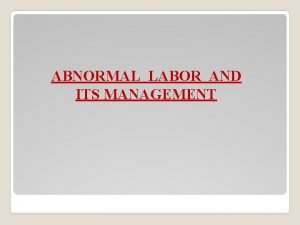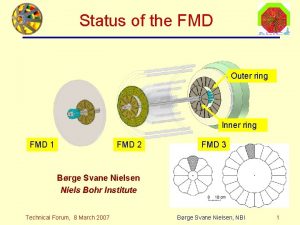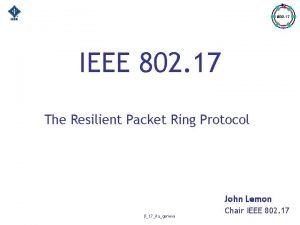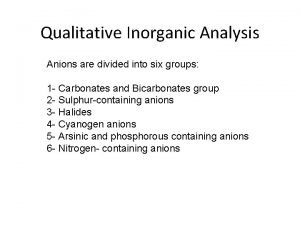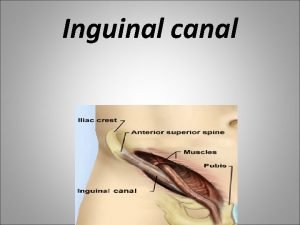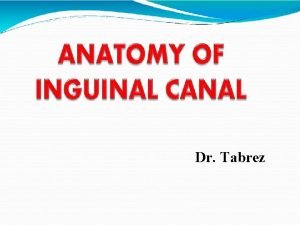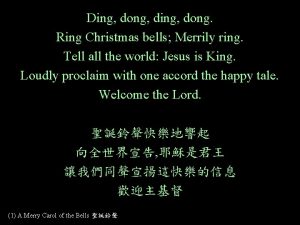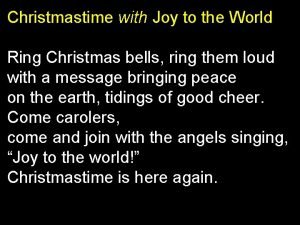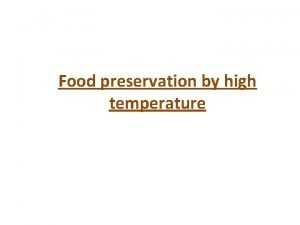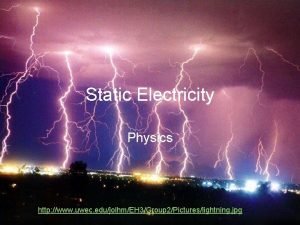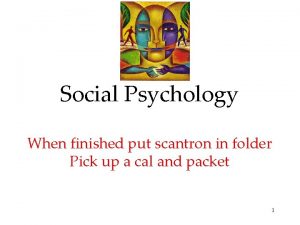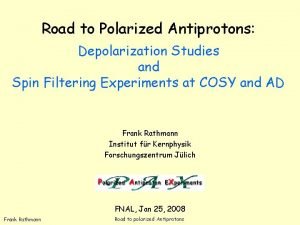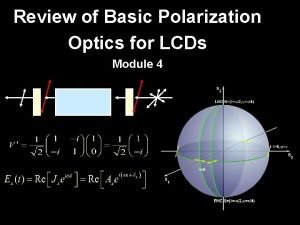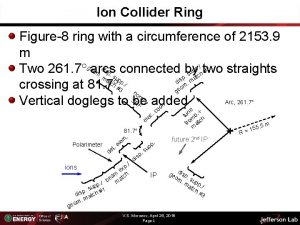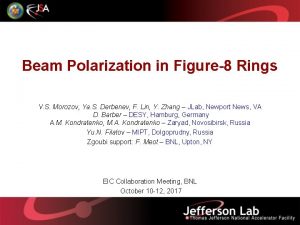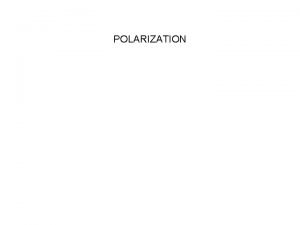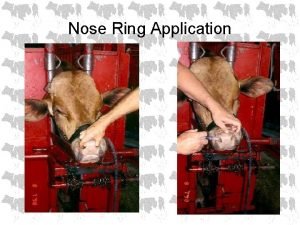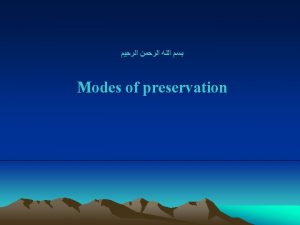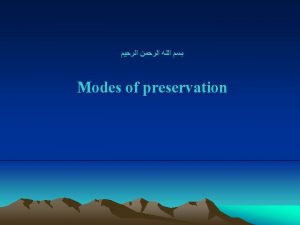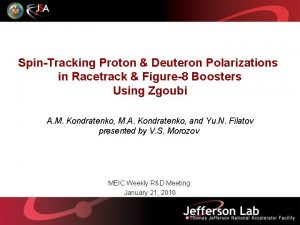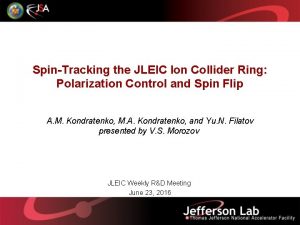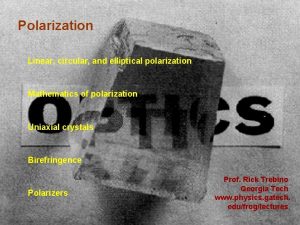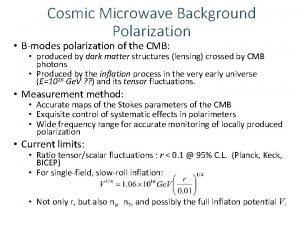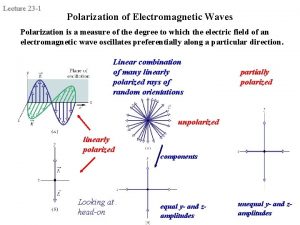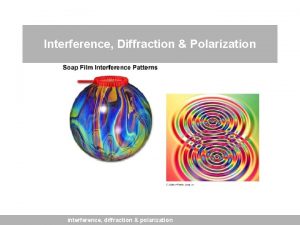Polarization Preservation and Control in a Figure8 Ring




















- Slides: 20

Polarization Preservation and Control in a Figure-8 Ring V. S. Morozov, Ya. S. Derbenev, F. Lin, and Y. Zhang Jefferson Lab, Newport News, VA, USA A. M. Kondratenko, M. A. Kondratenko Science and Technique Laboratory Zaryad, Novosibirsk, Russia Yu. N. Filatov Moscow Institute of Physics and Technology, Dolgoprydny, Russia SPIN 2014, Beijing University, Beijing, China October 20, 2014

Outline Introduction Figure-8 versus circular accelerators with Siberian Snakes Polarization preservation during acceleration Polarization control in a storage or collider ring Compensation of zero-integer spin resonance strength Initial spin tracking results Conclusions V. S. Morozov et al. , SPIN 2014, October 20, 2014 2

Medium-energy Electron Ion Collider (MEIC) Cold Ion Collider Ring (25 to 100 Ge. V) Warm Large Booster (3 to 25 Ge. V) Warm Electron IP Collider Ring (3 to 12 Ge. V) Prebooster Electron Injector IP SRF Linac 12 Ge. V CEBAF V. S. Morozov et al. , SPIN 2014, October 20, 2014 3 Ion Source

Ion Polarization Requirements Major MEIC ion complex components Cooling SRF linac Ion source Prebooster (accumulator ring) to high-energy collider ring Large booster Medium-energy collider ring Polarization design requirements – – High polarization (~80%) of protons and light ions (d, 3 He++, and possibly 6 Li+++) Both longitudinal and transverse polarization orientations available at all IPs Sufficiently long polarization lifetime Spin flipping V. S. Morozov et al. , SPIN 2014, October 20, 2014 4

Spin Motion in a Figure-8 Ring Properties of a figure-8 structure – Spin precessions in the two arcs are exactly cancelled – In an ideal structure (without perturbations) all solutions are periodic – The spin tune is zero independent of energy A figure-8 ring provides unique capabilities for polarization control – It allows for stabilization and control of the polarization by small field integrals – Spin rotators are compact, easily rampable and have little or no orbit distortion – It eliminates depolarization problem during acceleration • Spin tune remains constant for all ion species avoiding spin resonance crossing – – It provides efficient polarization control of any particles including deuterons It is currently the only practical way to accommodate polarized deuterons Electron quantum depolarization is reduced due to energy independent spin tune It makes possible ultra-high precision experiments with polarized beams n=0 V. S. Morozov et al. , SPIN 2014, October 20, 2014 5

Polarization Control Concept Local spin rotator determines spin tune and local spin direction Polarization is stable if >> w 0 – w 0 is the zero-integer spin resonance strength – B||L of only 3 Tm provides deuteron polarization stability up to 100 Ge. V – A conventional ring at 100 Ge. V would require B||L of 1200 Tm or B L of 400 Tm V. S. Morozov et al. , SPIN 2014, October 20, 2014 6

Circular Ring versus Figure-8 Weak-field Polarization Control (PC) Siberian Snake (SS) Spin Rotators (R) Circular ring with Siberian Snakes – Adequate at high energies – Single stable polarization direction – Polarization control by strong-field spin rotators (R) – Orbital dynamics may be affected by polarization control Figure-8 ring – Adequate at low to medium energies – Any polarization direction is allowed – Polarization control by weak-field solenoids (PC) – Orbital dynamics is not affected V. S. Morozov et al. , SPIN 2014, October 20, 2014 7

Acceleration and Spin Matching Beam from Linac Large booster Prebooster To the collider ring Pre-booster (1 solenoid) Large booster (1 solenoid) 0. 785 / 3. 83 0. 06 / 0. 28 60 0. 003 / 0. 01 3. 83 / 25 0. 28 / 1. 9 120 0. 003 / 0. 01 Conventional 20 Ge. V accelerators require B||L of ~70 Tm for protons and ~250 Tm for deuterons V. S. Morozov et al. , SPIN 2014, October 20, 2014 8

Solenoid Matching in Prebooster lattice without solenoid Prebooster lattice with solenoid No correction needed V. S. Morozov et al. , SPIN 2014, October 20, 2014 9 solenoid

Polarization Control with 3 D Spin Rotator 3 D spin rotator Control of radial (nx) spin component Control of vertical (ny) spin component nx control module (constant radial orbit bump) Control of longitudinal (nz) spin component x z ny control module (constant vertical orbit bump) y z nz control module V. S. Morozov et al. , SPIN 2014, October 20, 2014 10 IP

Polarization Control in the Collider Ring Placement of the 3 D spin rotator in the collider ring 3 D Ro Spin tat or Integration of the 3 D spin rotator into the collider ring’s lattice – Seamless integration into virtually any lattice Spin-control solenoids Vertical-field dipoles Radial-field dipoles Lattice quadrupoles V. S. Morozov et al. , SPIN 2014, October 20, 2014 11

Solenoid Strengths for deuterons, = 2. 5 10 -4 Momentum dependence of Radial Vertical Longitudinal (B||L)1 (B||L)2 (B||L)3 Momentum dependence of the solenoid strengths for protons, = 0. 01 Radial Vertical Longitudinal (B||L)1 (B||L)2 (B||L)3 V. S. Morozov et al. , SPIN 2014, October 20, 2014 12

Deuteron Polarization Behavior Radial polarization at IP assuming d = 2. 5 10 -4, p = 100 Ge. V/c nx ny nz Vertical polarization at IP Longitudinal polarization at IP V. S. Morozov et al. , SPIN 2014, October 20, 2014 13

Proton Polarization Behavior Radial polarization at IP assuming p = 1 10 -2, p = 100 Ge. V/c nx ny nz Vertical polarization at IP Longitudinal polarization at IP V. S. Morozov et al. , SPIN 2014, October 20, 2014 14

Zero-Integer Spin Resonance Strength The total zero-integer spin resonance strength is composed of – coherent part due to closed orbit excursions – due to transverse and longitudinal emittances The coherent part where F( ) is the spin response function, arises due to radial fields from – dipole roll – vertical quadrupole misalignments V. S. Morozov et al. , SPIN 2014, October 20, 2014 15

Compensation of Zero-Integer Resonance In linear approximation, the zero-integer spin resonance strength is determined by two components of spin perturbation lying in the ring’s plane and can be compensated by correcting devices whose spin rotation axis lies in the same plane Additional 3 D spin rotators can be used to compensate the coherent part of the zero-integer spin resonance strength Spin resonance strength after compensation V. S. Morozov et al. , SPIN 2014, October 20, 2014 16

Spin-Tracking Perfect Figure-8 Ring MEIC lattice, no errors, 60 Ge. V/c proton, initial spin nz = 1, reference orbit using Zgoubi by F. Meot Proton on one-sigma phase-space trajectories in both x and y V. S. Morozov et al. , SPIN 2014, October 20, 2014 17

Error Effect and Correction One arc dipole rolled by 0. 2 mrad, no closed orbit correction After addition of a 1 spin rotator solenoid in the straight V. S. Morozov et al. , SPIN 2014, October 20, 2014 18

Acceleration With 0. 2 mrad dipole roll, no orbit correction, no spin rotator, 200 103 turns After addition of a 5 spin rotator in the straight , 300 103 turns V. S. Morozov et al. , SPIN 2014, October 20, 2014 19

Conclusions Schemes have been developed for MEIC based on the figure-8 design that – eliminate resonant depolarization problem during acceleration – allow polarization control by small fields without orbit perturbation – provide for seamless integration of the polarization control into the ring lattice – efficiently control the polarization of any particles including deuterons – allow adjustment of any polarization at any orbital location – allow spin manipulation during experiments – make possible ultra-high precision experiments with polarized beams – allow for straightforward adjustment of spin dynamics for any experimental needs Initial spin tracking results support the validity of the developed concepts V. S. Morozov et al. , SPIN 2014, October 20, 2014 20
 Constriction ring uterus
Constriction ring uterus Inner ring and outer ring
Inner ring and outer ring Resilient packet ring
Resilient packet ring What is the brown ring in the brown ring test
What is the brown ring in the brown ring test Hesselbach's triangle borders
Hesselbach's triangle borders Deep inguinal ring
Deep inguinal ring Ring christmas bells ding dong
Ring christmas bells ding dong Wise men gifts
Wise men gifts Fahrheit
Fahrheit Interference diffraction and polarization
Interference diffraction and polarization Module 74: attribution, attitudes, and actions
Module 74: attribution, attitudes, and actions Deindividuation
Deindividuation Dispositional attribution
Dispositional attribution Charge by polarization
Charge by polarization Social trap example
Social trap example Groups tend to loaf less when
Groups tend to loaf less when Chapter 13 social psychology
Chapter 13 social psychology Groupthink vs group polarization
Groupthink vs group polarization Group polarization example
Group polarization example Depolarization vs polarization
Depolarization vs polarization Polarization ellipse equation
Polarization ellipse equation
